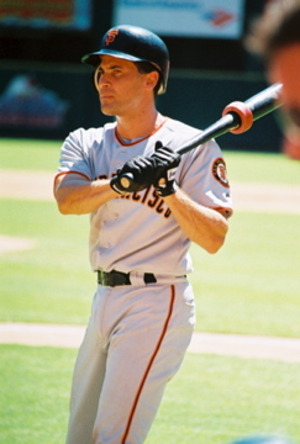The decade of the 1970’s was a rollercoaster ride for the sport of NASCAR. Nonetheless, the sport survived and continued its growth throughout the 1980’s.
A major change occurred following the 1980 season, as NASCAR abandoned the bigger cars for smaller compact cars that mirrored the more efficient cars that dealerships were selling. The wheelbase was reduced from 115 inches to 110 inches. The race at Riverside in January of 1981, won by Bobby Allison, marked the final race for the old cars. The new body style debuted at Daytona in February, and Richard Petty claimed that event.
The 1980 season produced a surprised championship winner, as sophomore driver Dale Earnhardt earned his first championship driving for Rod Osterlund. Earnhardt also won the 1986 and 1987 titles with Richard Childress.
Legend Bobby Allison emerged as the best driver without a championship to his name. He consistently ran with the top dogs throughout his career. His championship dearth ended in 1983 with a popular championship run, outdueling villain Darrell Waltrip. Waltrip became the weekly favorite after winning titles in 1981 and 1982 with Junior Johnson.
The 1983 season was not without controversy. At the time, NASCAR did not allow teams to put left side tires on the right side, and vice versa. Petty claimed his 198th career win, inching ever closer to the 200-win milestone. Unfortunately, the win at Charlotte Motor Speedway was tainted with a humiliating scandal often referred to as “Pettygate.
Petty charged through the field with all left tires on his car, which was a NASCAR infraction. When NASCAR realized the transgression, Petty crewman Maurice Petty, also Richard’s brother, also revealed that the engine was significantly larger than the 358-cid limit allowance. It measured at nearly 382 cid. NASCAR did not strip Petty of the victory, but they penalized him and the team 104 championship points. This caused a lot of controversy, as just months earlier, newcomer Tim Richmond was penalized five laps at Martinsville for having all left side tires.
Petty left Petty Enterprises following the 1983 season, landing a ride with music producer Mike Curb. He kept the STP sponsorship, as well as the No. 43. Kyle Petty replaced his father. Petty won his 200th career race at Daytona on July 4th with President Ronald Reagan in attendance.
Bill Elliott emerged as a fan favorite in the mid-1980’s. Driving the No. 9 Ford Thunderbird for Harry Melling, he absolutely dominated the superspeedways in 1985, winning 11 races total. Perhaps his most memorable win was at the Southern 500 in Darlington. Elliott had already won two of the first three crown jewel races at Daytona and Talladega. R.J. Reynolds announced that they would award $1,000,000 to any driver winning three of four crown jewel events. Elliott’s win at Darlington earned him the first Winston Million prize, and the first driver to claim $1,000,000 in single race. Elliott’s speedway ascendancy faded in 1986, but he crushed the all-time stock car qualifying with a speed of 212.809 at Talladega in May of 1987. He won the title in 1988.
The May race at Talladega in 1987 is most memorable for Bobby Allison’s horrific crash after blowing a tire early in the race. His car lifted off the ground and crashed into the catchfence on the frontstretch, which put spectators at risk. Allison was uninjured, but the race was red flagged for three hours. His son Davey went on to record his first career win.
Due to the scary crash, NASCAR mandated the use of restrictor plate at Talladega in Daytona.
The 1985 season marked the inaugural All-Star race at Charlotte won by Waltrip. The two most memorable occurred in 1987 and 1989. In 1987, Earnhardt attempted to fend off Elliott and Geoff Bodine. He was able to control his car despite getting into the grass, and won the race. Elliott and Bodine lashed out at Earnhardt following the race due to his aggressive tactics. This was the “pass in the grass”.
In 1989, Rusty Wallace spun Waltrip in the closing laps triggering a brawl between the two pit crews. The perception of Waltrip almost immediately reversed following the skirmish. Wallace became the man with the black hat.
Several deaths marred NASCAR in the 1980’s, but the one that fans remember did not happen on the track. Tim Richmond emerged as an up and coming star in the early 80’s before upstart Hendrick Motorsports signed him in 1986. Richmond led the series with seven wins and was destined to give Earnhardt a run for his money. However, Richmond abruptly stepped out of his ride prior to the 1987 season for what he claimed was pneumonia. He returned for eight races, winning two. Rumors regarding his sickness surfaced, and NASCAR botched a drug test in 1988 to keep him from racing. He eventually disappeared from NASCAR. He tragically passed away in August of 1989 due to the AIDS virus.
Several superstars retired in the 1980’s including David Pearson, Cale Yarborough, and Allison. Allison’s career ended in 1988 following a horrendous wreck at Pocono. Buddy Baker and Benny Parsons drove partial schedules for much of the decade, as did Pearson and Yarborough.
Memorable rivalries included Waltrip vs. Allison, Earnhardt vs. Waltrip, Earnhardt vs. Bodine, Waltrip vs. Wallace, Earnhardt vs. Elliott, Earnhardt vs. Richmond, Wallace vs. Earnhardt, Ricky Rudd vs. Wallace
Champions from the 1980’s include Earnhardt (1980, 1986, 1987), Waltrip (1981, 1982, 1985), Allison (1983), Terry Labonte (1984), Elliott (1988), Wallace (1989)
Resource: NASCAR Chronicle



